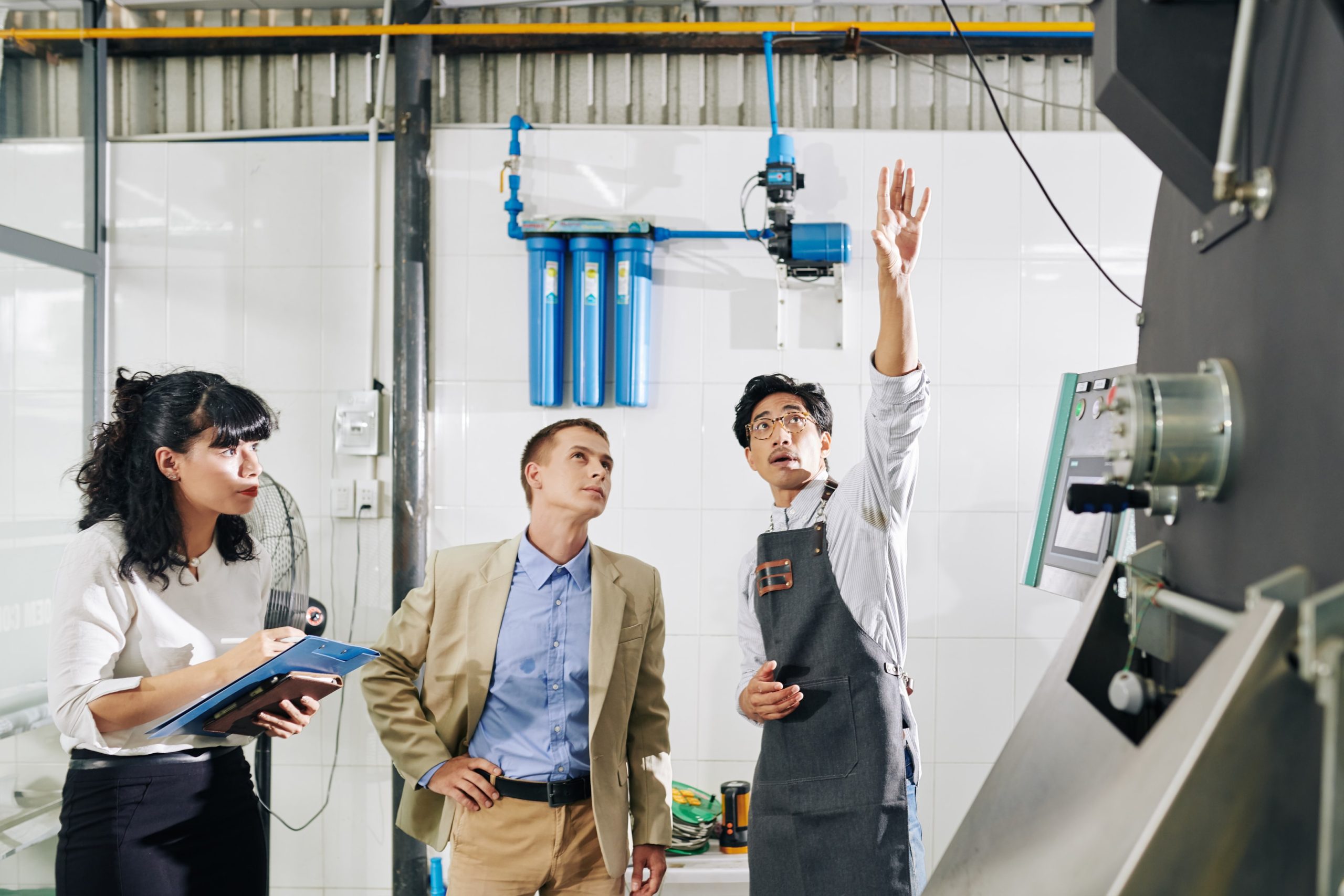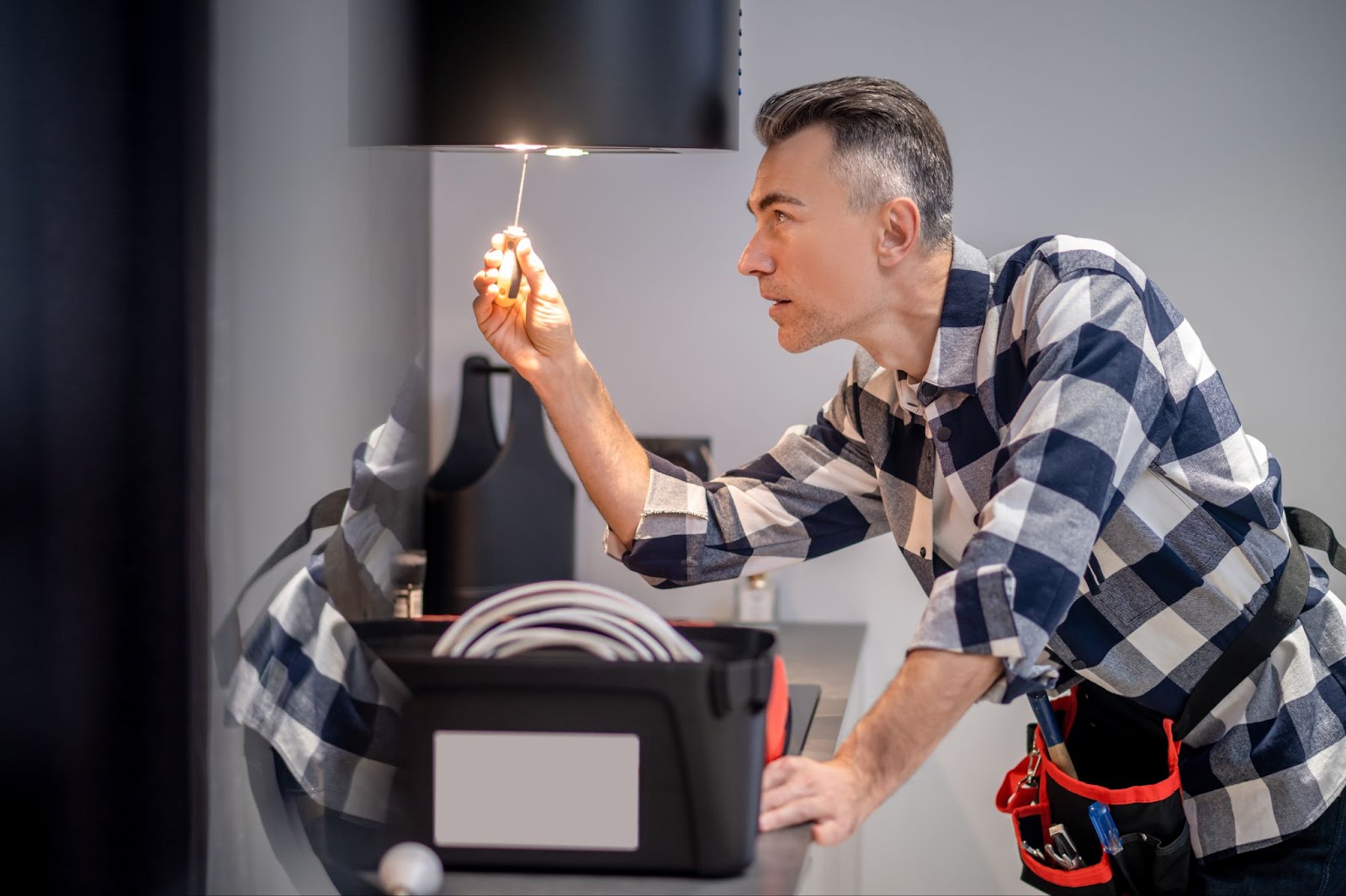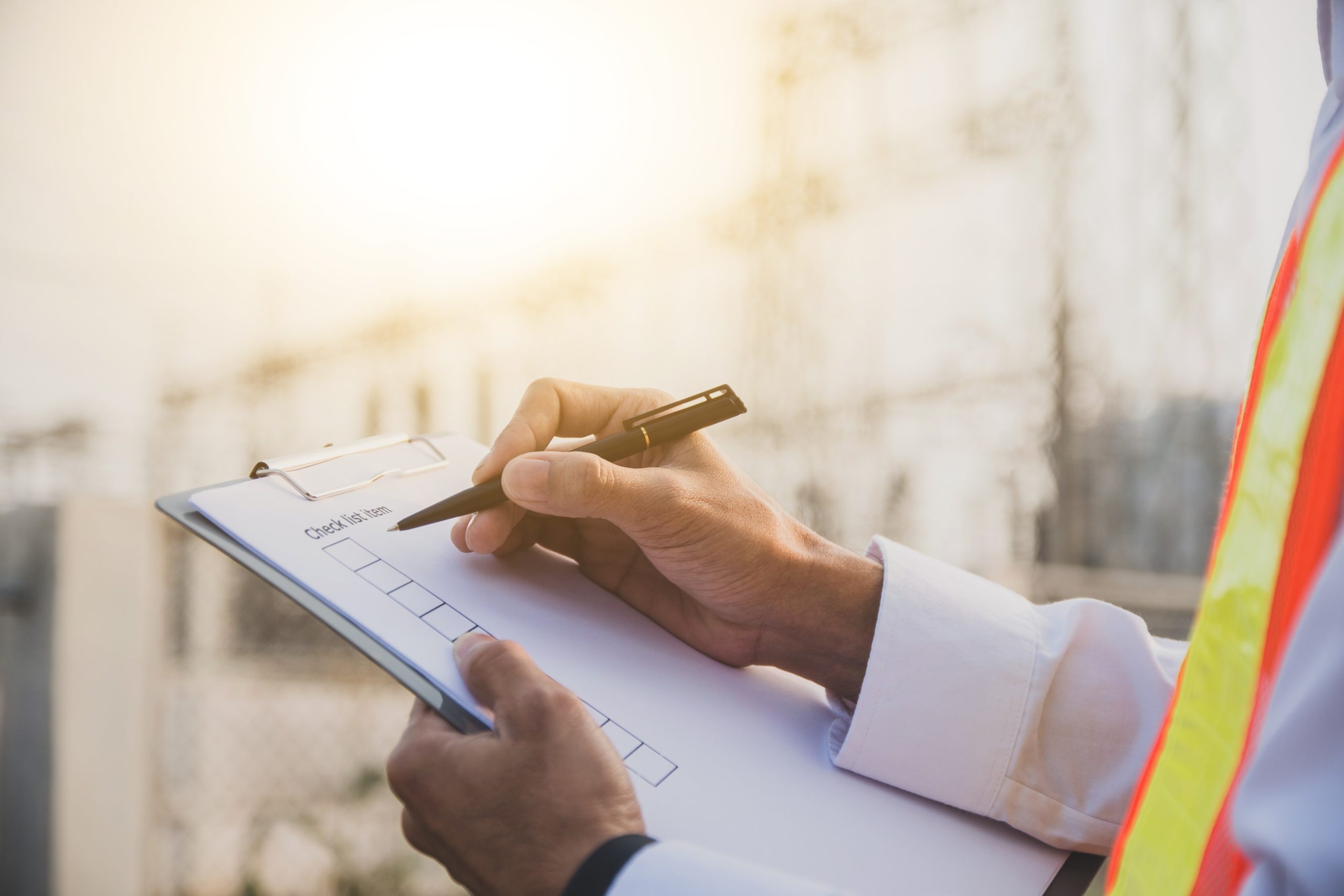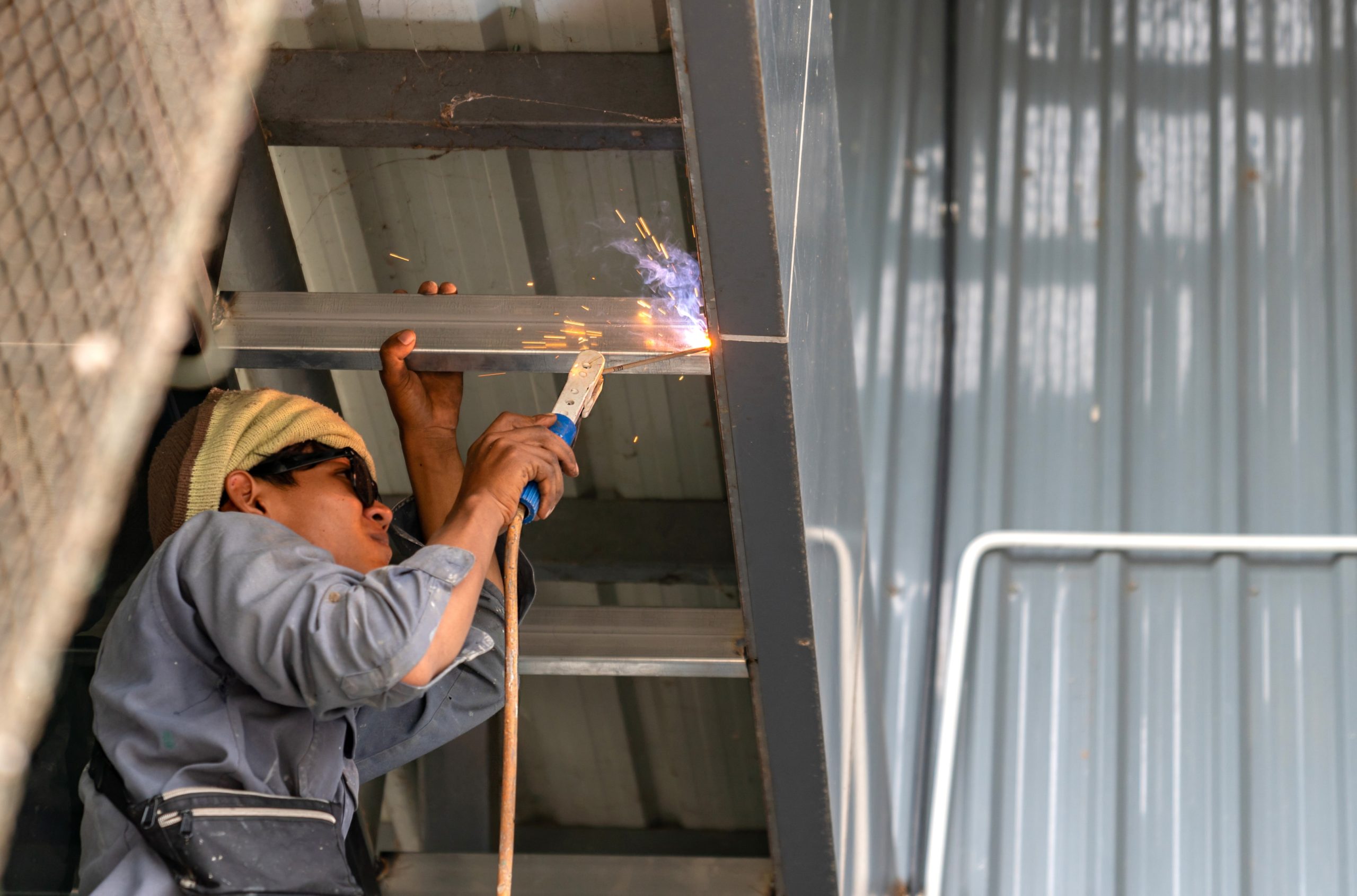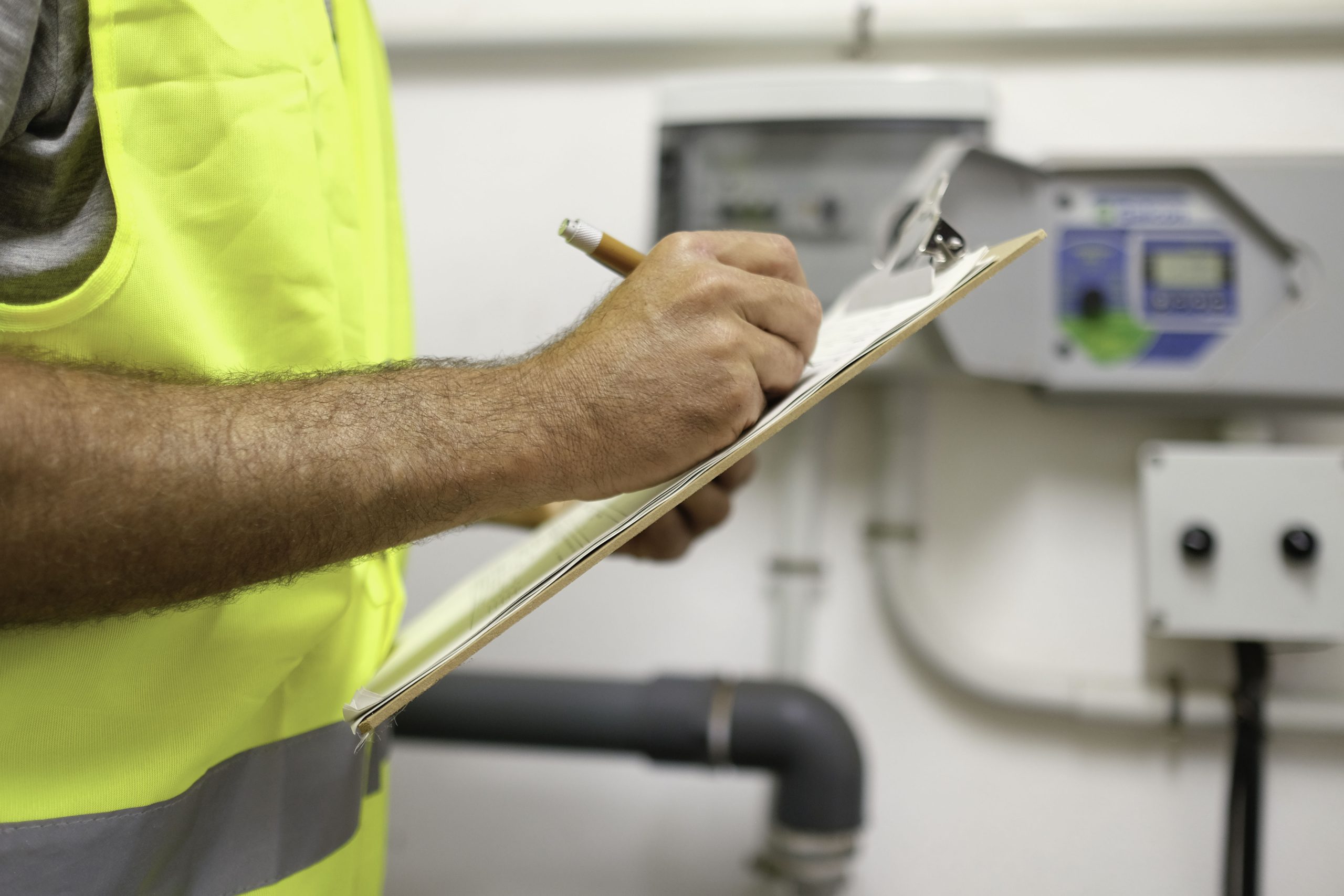Plumbing issues disrupt business operations, create safety hazards, and leave a negative impression on customers. A clogged toilet, a leaking pipe, or low water pressure can quickly turn into costly repairs if not addressed right away.
Retail plumbing problems happen often, but many can be prevented with early detection and regular sewer line inspections. Slow drains, hidden leaks, and inconsistent water pressure are signs that should never be ignored.
Minor plumbing issues have quick fixes, while others require professional attention to prevent long-term damage.
This guide covers the most common retail plumbing issues, how to fix them, and when to bring in a professional plumber.
Why Retail Plumbing Problems Can’t Be Ignored
Plumbing issues in a retail store don’t just cause minor inconveniences. They disrupt operations, frustrate employees, and turn customers away. If restrooms are out of order or there’s water pooling near fixtures, shoppers may leave and not return.
Delaying repairs only makes problems worse. The longer issues go unaddressed, the more expensive they become. Plumbing failures can also lead to health hazards, safety risks, and damage to store fixtures.
With high foot traffic and constant restroom use, commercial buildings put extra strain on commercial plumbing systems. Pipes, drains, and fixtures wear down faster, making failures more frequent.
Recognizing common plumbing issues early makes it easier to keep them from escalating. Here’s what to watch out for and how to fix them.
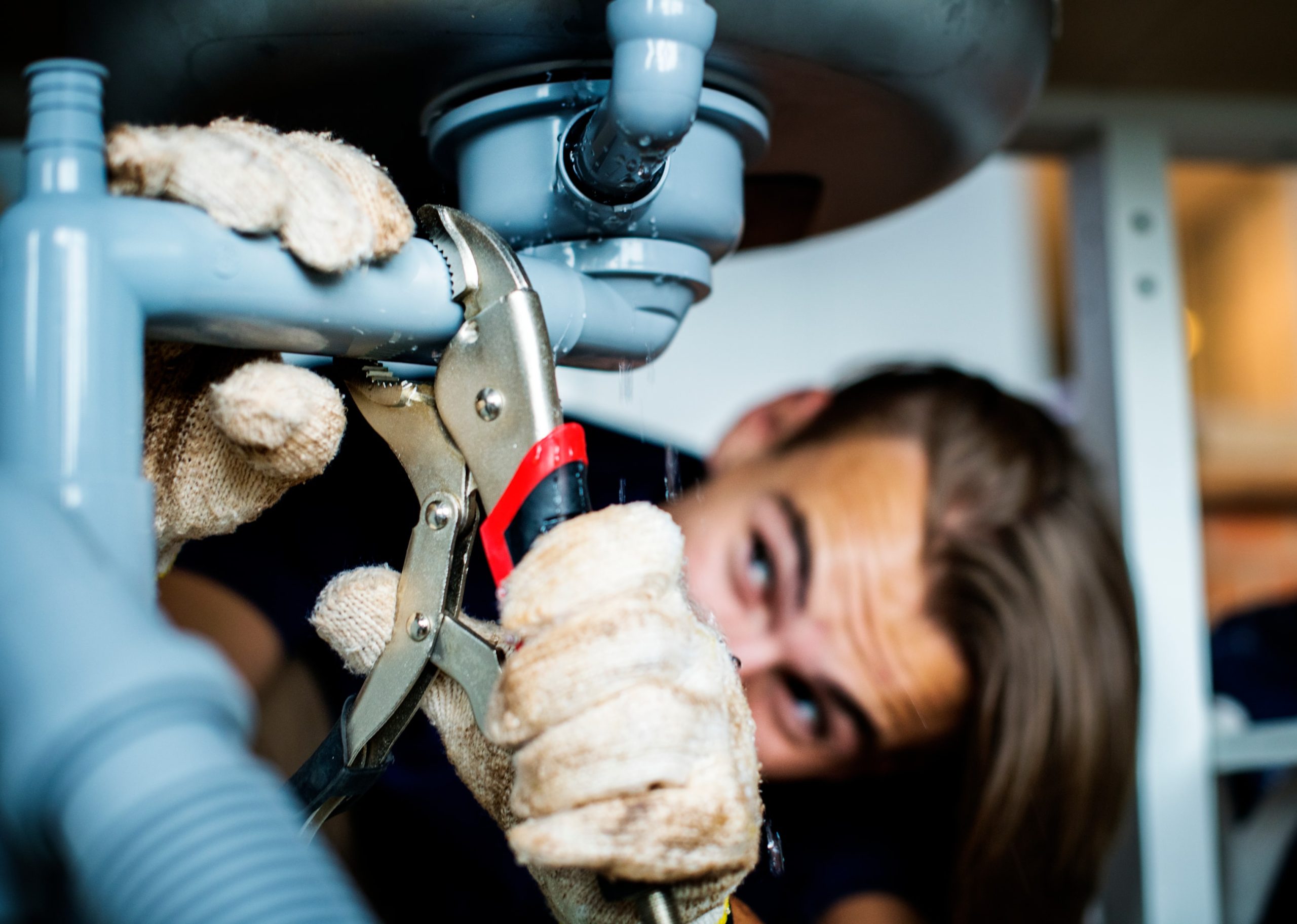
Common Retail Plumbing Issues and How to Fix Them
Plumbing systems in commercial properties experience heavier use than those in other business settings. Without regular maintenance, minor issues can quickly escalate into costly repairs. Knowing how to spot and address common plumbing problems can help keep business running smoothly.
Clogged Drains and Toilets
Restroom clogs happen frequently in retail spaces. High usage, improper waste disposal, and food waste from breakrooms or cafés can cause blockages. A plunger usually clears minor clogs, and a drain snake can handle deeper ones.
If backups keep happening, a plumber may need to inspect for pipe corrosion or other underlying issues.
Leaky Faucets and Pipes
A dripping faucet or a slow leak under a sink wastes water and increases utility costs. Over time, even a small leak can lead to mold and structural damage. Fixing leaky faucets quickly prevents unnecessary water loss and higher bills.
If leaks persist, damaged pipes may be the cause of major leaks and require professional repair.
Low Water Pressure
Sinks and toilets with weak water flow slow down restroom use and frustrate customers. Proper water pressure ensures that sinks, toilets, and other fixtures function efficiently.
If multiple fixtures have low pressure, clogged aerators, broken pipes, or municipal supply issues could be the problem.
Water Heater Issues
Retail employees rely on hot water for cleaning and sanitation, and when it stops working, it becomes a problem fast. If water is lukewarm or takes too long to heat, sediment buildup in the tank could be reducing efficiency.
Flushing the system often resolves the issue, but if the heater is outdated, replacing it with a newer model may be the best option.
Sewer Odors and Drain Backups
A foul smell coming from drains is more than just unpleasant. It can signal a serious plumbing issue. Sewer backups, clogged vent pipes, or dry floor drains can cause foul odors to spread through the store.
Pouring water into unused floor drains helps, but if odors persist, a bigger blockage may need professional cleaning.
What to Do When a Plumbing Emergency Happens
Suppose there’s a plumbing emergency. Shutting off the water supply is the first step. Every store should know where the main shut-off valve is located. Turning off the water prevents flooding and protects inventory, equipment, and flooring.
Once the water is off, containing the problem helps minimize damage. Towels, buckets, and absorbent materials can stop water from spreading. If a pipe bursts, moving inventory and electrical equipment out of the affected area prevents further losses.
Next, assess the severity:
- Minor leaks or slow drains may not need immediate attention but should still be monitored.
- Sewer backups or major flooding require urgent action to prevent structural damage and disruptions.
Keeping employees and customers safe should always be a priority. Wet floors create slip hazards, so blocking off the area with signs or barriers helps prevent accidents.
For major plumbing failures, calling a professional is the best course of action. A commercial plumber will provide the right solution and help prevent the problem from happening again.
When to Call a Professional Plumber
Some plumbing problems look minor on the surface but can indicate more serious issues. When these warning signs appear, commercial plumbing services prevent expensive repairs and minimize downtime.
Persistent Drain Clogs
If multiple sinks or toilets clog at the same time, the issue is likely deeper in the plumbing system. A plumber can inspect the pipes and clear out blockages that a plunger or drain snake won’t reach.
Leaks That Don’t Stop
A small leak can usually be tightened or sealed, but if it keeps coming back, there could be a hidden break in the pipes. Water stains, mold growth, or musty odors are signs of a bigger issue that needs professional attention.
Sewer Odors and Backups
Unpleasant odors coming from drains could mean a clog in the sewer line. If water is backing up into sinks, toilets, or floor drains, it’s a serious problem that needs immediate repair. Left unchecked, sewer issues can lead to property damage and health risks.
Ongoing Low Water Pressure
If cleaning the aerators doesn’t solve the problem and multiple fixtures have weak water flow, galvanized steel pipes or corroded lines may be the cause. A plumber can inspect the system and find the right solution.
Water Heater Problems
If a water heater isn’t producing hot water, leaks, or makes unusual noises, it may be failing. Repairs or replacements should always be handled by a professional to avoid safety risks.

Best Practices to Prevent Common Plumbing Issues
Other than routine checks, making a few changes can extend the life of a plumbing system and reduce the risk of unexpected breakdowns.
- Use touchless faucets and automatic flush toilets. These reduce wear and tear while also improving hygiene.
- Install drain strainers. Preventing debris from entering the pipes reduces the risk of blockages.
- Educate employees. Staff should know what can and cannot go down drains and how to report potential plumbing issues before they get worse.
- Winterize pipes if necessary. In colder regions, insulating pipes and keeping a steady water flow during freezing temperatures can prevent burst pipes.
- Flush drains regularly. Slow-moving drains can indicate early buildup. Flushing them with hot water and mild cleaners helps prevent major clogs.
- Check toilets and urinals for leaks. Running toilets waste water and increase costs. Fixing them early prevents bigger problems.
Keep Business Running With Trillium’s 24/7 Plumbing Support
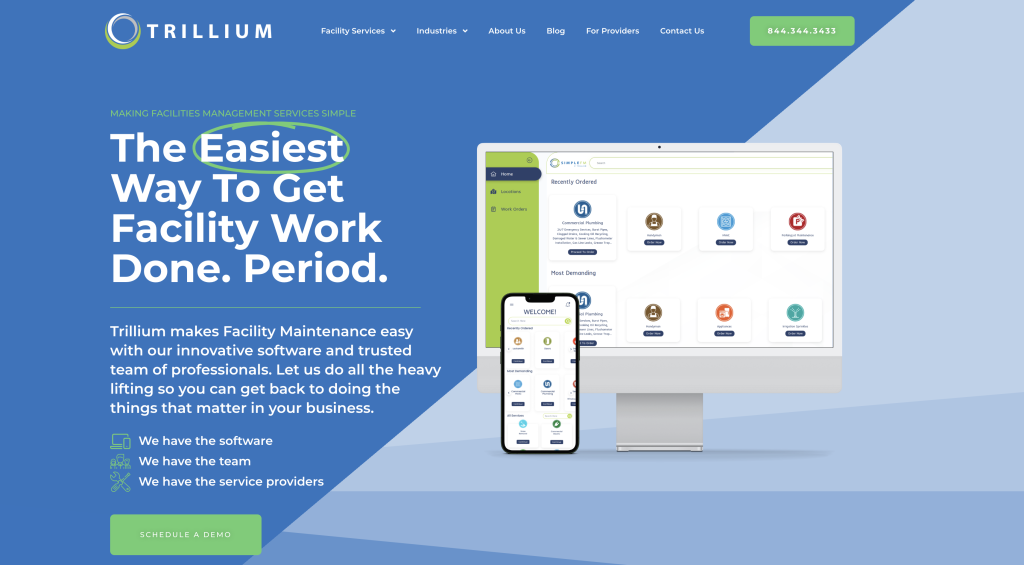
Retail plumbing issues can’t wait, but dealing with repairs shouldn’t mean paying high markups, committing to long-term contracts, or hiring full-time maintenance staff.
Trillium provides on-demand plumbing services, connecting businesses directly with vetted professionals—without unnecessary costs.
Unlike traditional facilities management, there are no hidden fees, no minimum order volumes, and no required commitments. Businesses get fast, professional plumbing repairs when they need them, whether it’s a clogged drain, a major leak, or a water heater failure.
With Trillium’s free-to-use software, retailers can schedule routine maintenance, request emergency repairs, and track costs—all in one place. This flexible approach reduces downtime, prevents costly damage, and keeps stores open without interruptions.
Need a more flexible plumbing solution? Contact Trillium for expert service and round-the-clock support.
FAQs About Fixing Retail Plumbing Issues
Who is responsible for plumbing issues?
Responsibility depends on the lease agreement. In most cases, landlords handle major plumbing system repairs, while tenants are responsible for routine maintenance, minor repairs, and any damage caused by store operations. Always check the lease to clarify responsibilities.
How much does it cost to fix a plumbing issue?
Costs vary based on the type of repair. Minor fixes like unclogging a drain or repairing a faucet may cost between $100 and $300. Larger issues, such as pipe replacements or water heater repairs, can range from $500 to several thousand dollars.
What is the most common plumbing repair?
Clogged drains and toilets are the most frequent plumbing repairs in retail stores. High foot traffic and improper waste disposal cause blockages, leading to slow drainage or backups. Regular drain cleaning and proper signage in restrooms help prevent these issues.
What is considered a plumbing problem?
Any issue that affects water flow, drainage, or plumbing fixtures is a plumbing problem. This includes clogged drains, leaking pipes, low water pressure, running toilets, water heater failures, and sewer backups. Addressing minor issues early prevents bigger, more expensive repairs.

